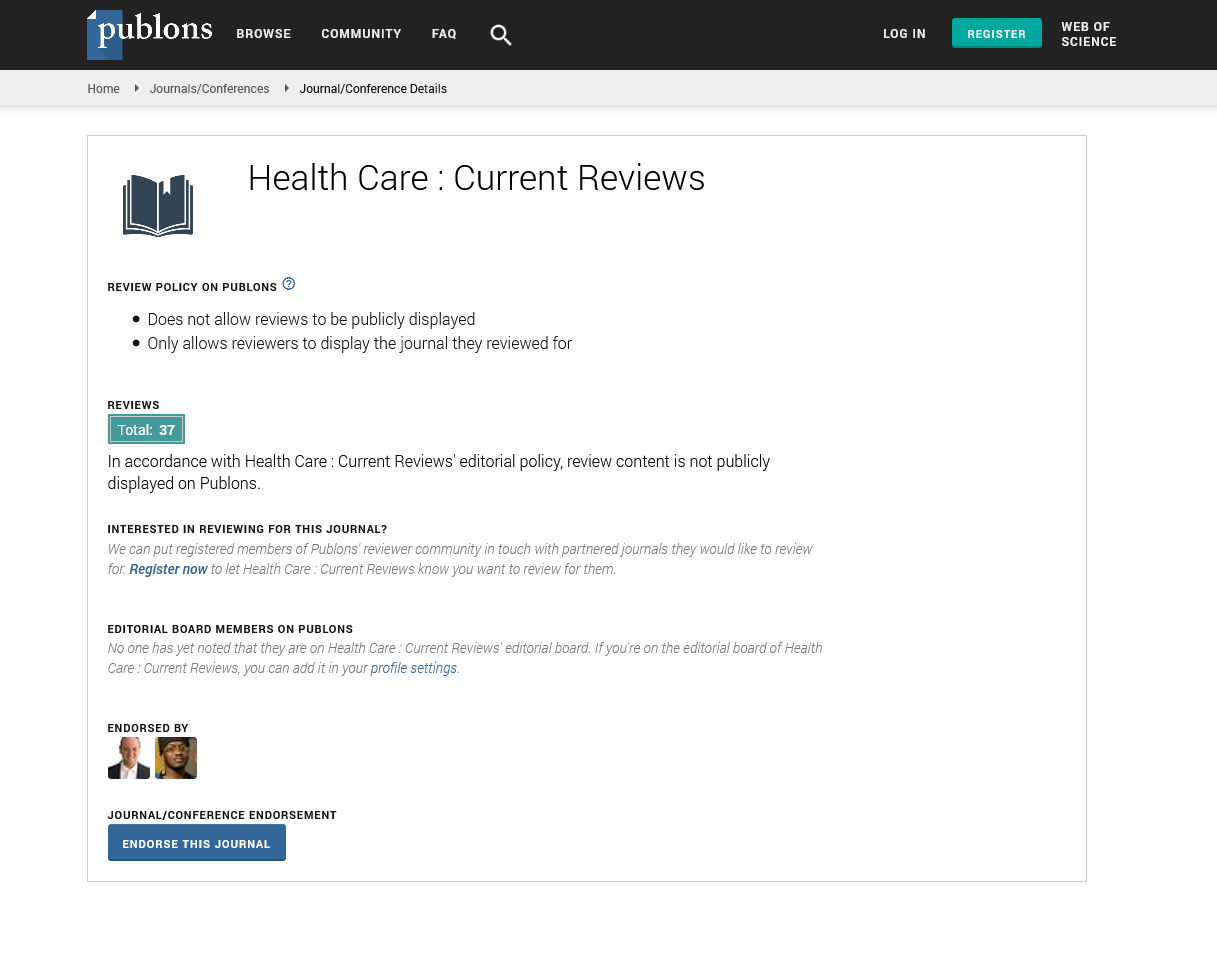PMC/PubMed Indexed Articles
Indexed In
- Open J Gate
- Academic Keys
- RefSeek
- Hamdard University
- EBSCO A-Z
- Publons
- Geneva Foundation for Medical Education and Research
- Google Scholar
Useful Links
Share This Page
Journal Flyer

Open Access Journals
- Agri and Aquaculture
- Biochemistry
- Bioinformatics & Systems Biology
- Business & Management
- Chemistry
- Clinical Sciences
- Engineering
- Food & Nutrition
- General Science
- Genetics & Molecular Biology
- Immunology & Microbiology
- Medical Sciences
- Neuroscience & Psychology
- Nursing & Health Care
- Pharmaceutical Sciences
Tele-robotic systems in medicine: Challenges and potential
Joint Meeting on 13th World Congress on Industrial Healthcare and Medical Tourism & 2nd World Congress on Bioinformatics & System Biology
October 15-16, 2018 Dubai, UAE
Sotiris Avgousti, Panicos Masouras, Eftychios G Christoforou, Andreas S Panayides, Pierre Vieyres and Cyril Novales
Cyprus University of Technology, Cyprus
University of Cyprus, Cyprus
Universite of Orleans, France
Posters & Accepted Abstracts: Health Care Current Reviews
Abstract:
Statement of the Problem: Medical robotic systems have been employed in various fi elds including general surgery, neurosurgery, and orthopedics. Tele-operated robots perform diagnostic and interventional tasks utilizing wired and/or wireless communication networks. A classifi cation into short and long-distance tele-robotic systems has been adopted, depending on the distance from which they are operated. A representative paradigm of the short-distance case is the da Vinci surgical system. An example of the long-distance tele-robotics concept is the MELODY system for tele-echography. Challenges concern the key enabling technologies involved namely robotic manipulation, telecommunications and vision systems.Methodology & Th eoretical Orientation: A systematic review of existing systems identifi ed the challenges as well as the potential of tele-robotics. Moreover, a tele-echography platform with a portable robot (MELODY system) for remote cardiac ultrasonography was set up. Diff erent video coding standards for cardiac ultrasound applications were compared in a real-time setup using 4G wireless networks and machine-to-machine communications.Findings: Tele-robotics has already been employed for various applications in diff erent medical disciplines. Even though some general-purpose tele-robotic systems have been developed the majority are application/anatomy specifi c. Moreover, manipulation systems used for tele-robotic applications are diverse in terms of kinematic structure, degrees-of-freedom and actuation methods. Despite remarkable achievements demonstrated by many tele-robotic systems only a few of them have been commercialized and adopted in clinical practice. Also, the majority of existing systems have been short-distance ones and the potential of operating them remotely remains largely unexploited. Based on the depicted experimental setup, mobile tele-echography using commercially available Long-Term Evolution (LTE) wireless networks and state-of-the-art video compression standards provide solid foundations for adopting remote long-distance examinations in standard clinical practice.Conclusion & Signifi cance: Further eff orts are required to address both clinical and technological challenges before the full potential of tele-robotics can be exploited. Benefi ts of using long-distance tele-robotics will particularly apply to rural areas, emergency incidents, military operations and in developing countries, where specialized medical personnel is not available.Recent Publications1. S Avgousti, et al. (2016) Cardiac ultrasonography over 4G wireless networks using a tele-operated robot. Healthc. Technol. Lett.; 3(3): 212-217.
Biography :
Sotiris Avgousti is currently working as an instructor Nursing Department at the Cyprus University of Technology, Limassol, Cyprus. He has received his PhD in Tele-robotics Engineering from the University of Orleans, France and his MSC in Computer Networks and Data Communication from Brunel University London, UK. He has extensive research experience in the elds of data communications and telemedicine with particular emphasis on tele-echography, eHealth and mHealth, medical imaging and nursing informatics. He is registered as a Chartered Engineer (CEng) at the Engineering Council of the UK and he is a Member of the Institution of Engineering and Technology, UK.
E-mail: sotiris.avgousti@cut.ac.cy

